Flooring is a crucial part of any interior design and can easily make or break your space. While our first interaction with a space is visual, the first physical contact a person will have with your space is the flooring. It serves as a foundation for your design and can ultimately impact its overall success. Regardless of which design style you have chosen, selecting a complementary flooring option is a must. As one of the most used surfaces in our home, flooring is expected to withstand constant use while enduring its transcendent quality. The floor is the base canvas on which the color, pattern, and design of your furniture will be based.
With the vast variety of flooring choices available today, it is easy to get carried away and forget about the practical aspects that should be taken into consideration. Pricing, quality, and style are amongst the top researched elements when purchasing flooring.
Let us take a tour of different flooring option’s and their pros and cons
Natural Stone Flooring:
Stone flooring has been a favorite of homeowners all over the world over the years. The term “natural stone” stands for a variety of naturally occurring material Marble, limestone, granite, travertine and sandstone are popular examples of natural stone flooring with different patterns, look and properties. With its unique character of no-two-pieces-look-alike, durability, and ageless beauty, this flooring material might well always remain one of the top choices.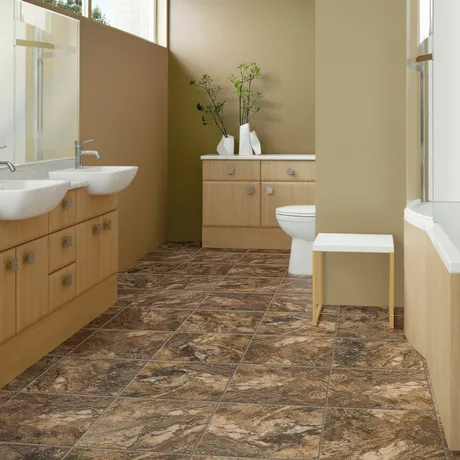
Pros:
- High stain resistance ( Marble is an exception) and durability, also fairly easy to maintain.
- Stone flooring keeps cool for most parts of the year and hence is a good choice
Cons:
- Expensive installation and maintenance, highly porous.
- Other drawbacks include the fact that some types of natural stones are brittle and can be easily scratched or chipped.
- Once damage occurs, it could be difficult to rectify. It is also important to note that some types of natural stones are porous and as such has to be regularly treated with a sealing agent to prevent water damage or staining.
Vitrified Flooring:
One of the most popular and affordable options suitable for both interior and exterior use. They are extremely durable and weather heavy daily use. These tiles are both discoloration and scratch-resistant and thus will easily hold good for a span of 10-15 years, when used with proper maintenance. Vitrified tiles are available in glossy, matte, and anti-skid finishes. Available in a wide range of colors, finishes, and prints. Marbonite is an option for marble by giving the same look at a much affordable price and is a versatile option of vitrified tile these days.
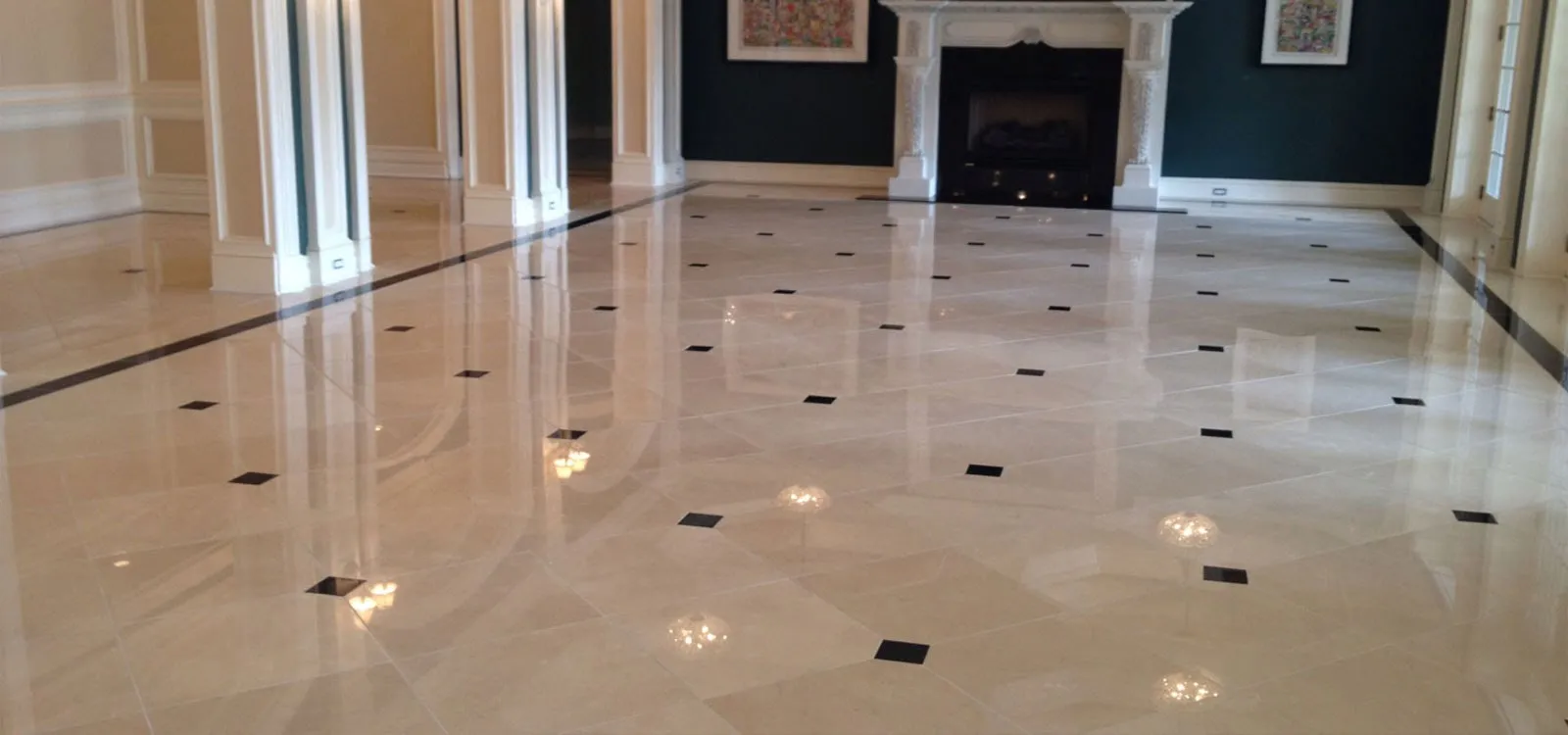
Pros:
- Generally coated with an external glaze, these tiles have a low water absorption rate and are durable.
- Easy to lay and easy to maintain,
Cons:
- Prone to breakage, might need a good installation team, and they have a shorter lifespan.
- They are more expensive than ceramic and porcelain.
Hardwood/ Timber Flooring:
Though hardwood flooring is relatively expensive when compared to other flooring options, it’s still a very popular choice in terms of aesthetics. Hardwood flooring is available in strips, planks, and parquet patterns. These floors can be quite durable if you care to maintain them well.
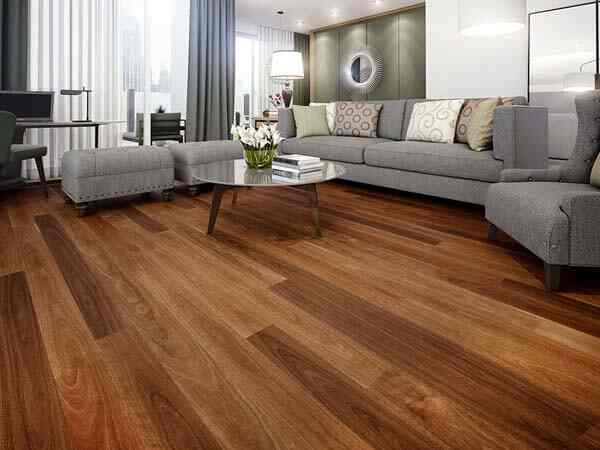
Pros:
- Wood floors are fairly easy to clean. It’s also very long-lasting it can be refinished to remove surface scratches for about five times.
Cons:
- They shrink and swell due to changes in temperature making them vulnerable to dents. Wear and tear can sometimes cause noises, creaks, and squeaking.
Bamboo Flooring:
Bamboo flooring has many of the same benefits and drawbacks of hardwood flooring, like wood flooring, bamboo is an attractive natural material that generally adds real estate value to a home. But like wood, bamboo can be scratched, and it is prone to cracking in conditions where humidity levels swing dramatically. Bamboo is every bit as hard as most hardwoods and is slightly more water-resistant.
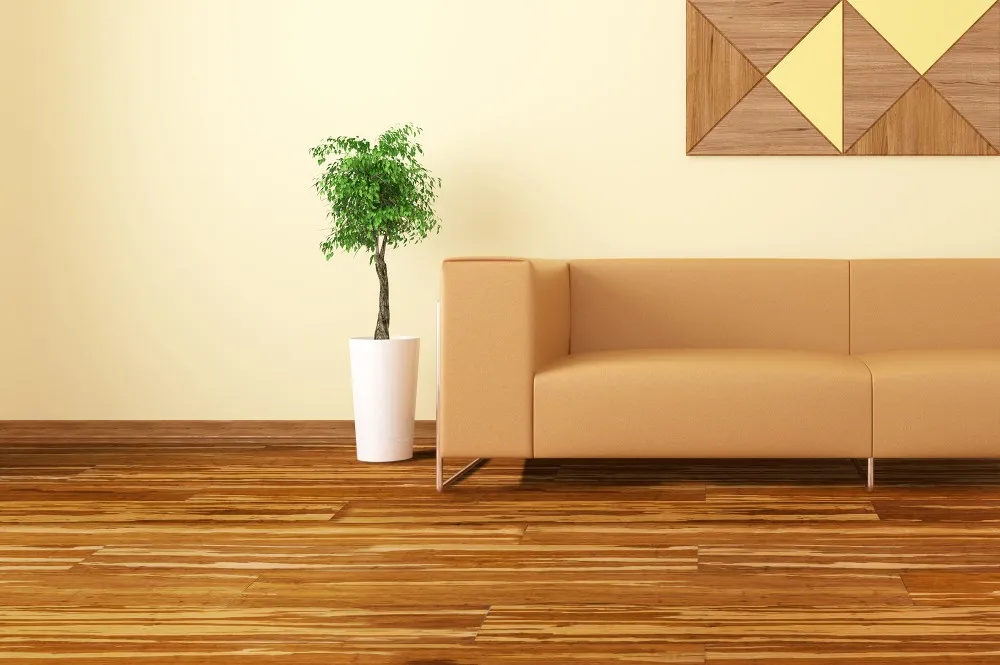
Pros:
- Renewable material
- Easy maintenance
- Can be refinished
- Adds real estate value.
Cons:
- Easily scratched
- Humidity swings can cause cracks
- Toxins present in adhesives
Laminates Flooring:
Laminate flooring allows you to enjoy a wood-like floor without the actual use of any solid wood in its construction, allowing it to be more environment-friendly. Laminate flooring is gaining popularity in India for its strength and durability. It is made up of 4 primary layers bonded together under high pressure. A moisture-resistant layer under a layer of HDF (high-density fiberboard) ensures a better life for products. A wide range of patterns and finishes available makes it a good choice for various decor styles in Indian homes.
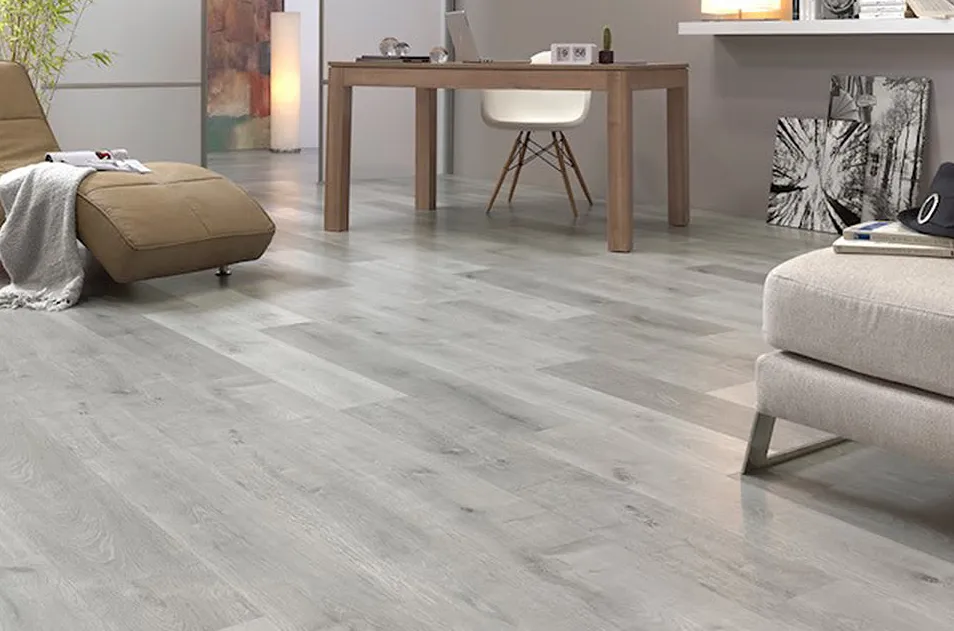
Pros:
- Laminate flooring is easy to install and is fairly resistant to stains and water damage. Also requires very little maintenance
Cons:
- Like tiles, laminate can be slippery when wet – so, make sure you ask for the ‘slip-resistant’ kind. Complete replacement can be the only option as it cannot be re-polished or re-done.
Terrazzo Flooring:
Commonly known as Mosaic Flooring, Terrazzo flooring is made up of chips of granite and marble placed in concrete or similar materials is another extremely popular type of flooring which has been commonly used in India for years. Today these traditional tiles have been re-invented so, if you are planning to add a tinge of Indian classical delight to your home, this could be a great choice.
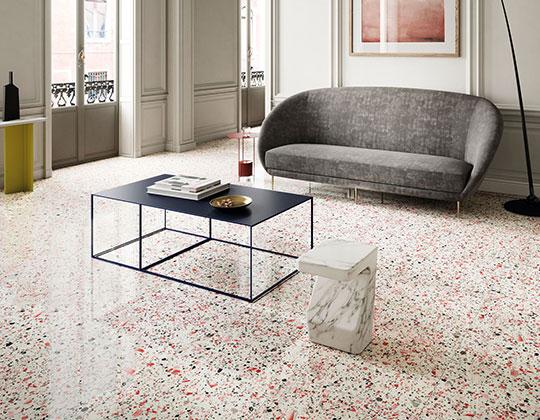
Pros:
- These floors are durable enough to stand the test of time.
Cons:
- Can form micropores in case installation is not done well.
Vinyl Flooring:
Vinyl Flooring is another affordable option that is available for people who want aesthetics at an efficient cost. It’s made from a layer of PVC (short for polyvinyl chloride) plastic over a layer of felt. Available designs can convincingly simulate hardwood and stone finishes, vinyl is one of the relatively inexpensive options in India.
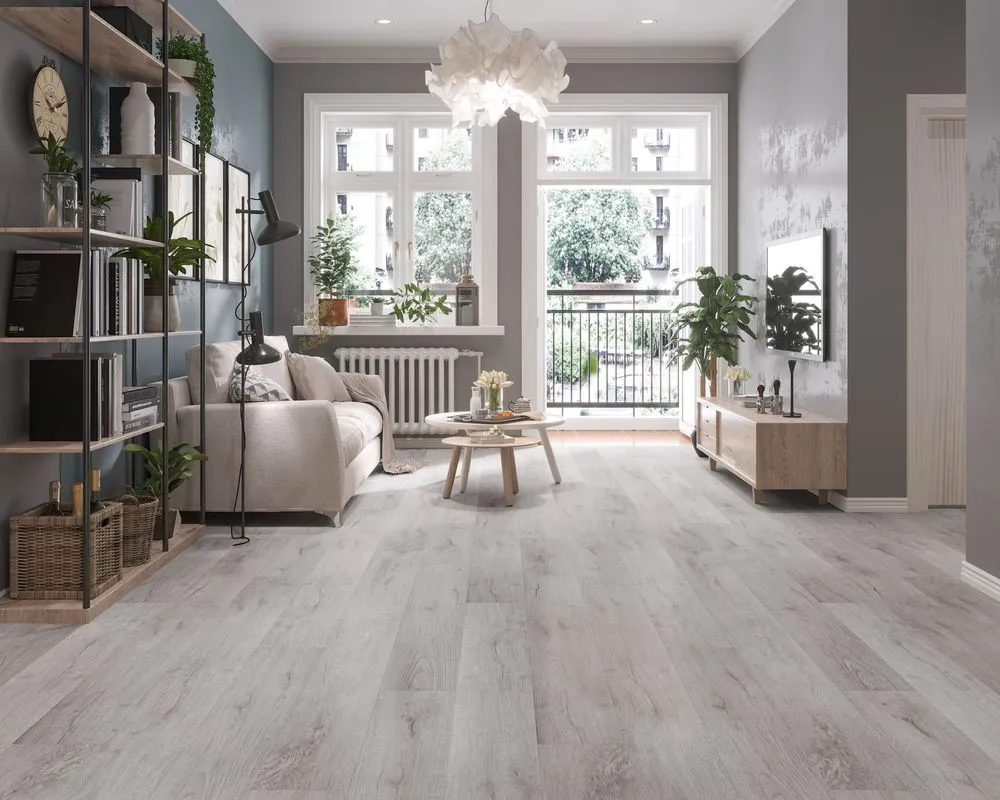
Pros:
- Vinyl is a tough material that stands up to both moisture and heavy traffic.
- It’s comfortable to walk on and warmer on bare feet than tile.
Cons:
- Vinyl flooring varies in quality.
- Low-cost options often have a fake look and it is susceptible to discoloration when it comes in contact with rubber.
- One of the biggest complaints about vinyl is that it’s not eco-friendly.
Linoleum Flooring:
Linoleum is another type of resilient flooring that’s been around for nearly 150 years. Unlike vinyl, it’s made from natural, renewable materials, including cork powder and linseed oil. For decades, it mostly disappeared from homes as vinyl became more popular. Due to its cost-efficient and highly versatile nature flooring option, it’s gaining popularity in Indian homes.
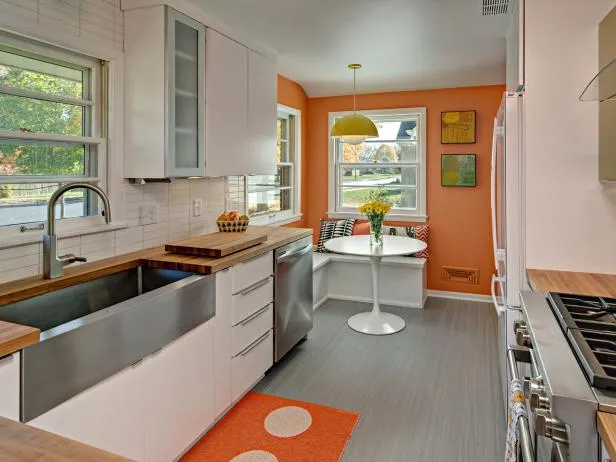
Pros:
- Linoleum flooring is even more durable than vinyl.
- It’s an eco-friendly material that produces no harmful emissions.
- Myriad options
- Easy Maintenance.
Cons:
- Linoleum isn’t as water-resistant as vinyl. The soft surface is prone to dents and scratches from careless usage.
Brick Flooring:
Aesthetically, brick flooring fits best with rustic home styles, such as cottage- or farm-style residences, cause brick is non-combustible, it's a good choice for flooring under or near wood stoves and fireplaces, where brick is traditionally right at home. These can be laid in innovative patterns including staggered, basket weave and other arrangements. As a bold design element, brick is hard to beat. It adds visual warmth, texture, color, and eye-catching pattern all at once.
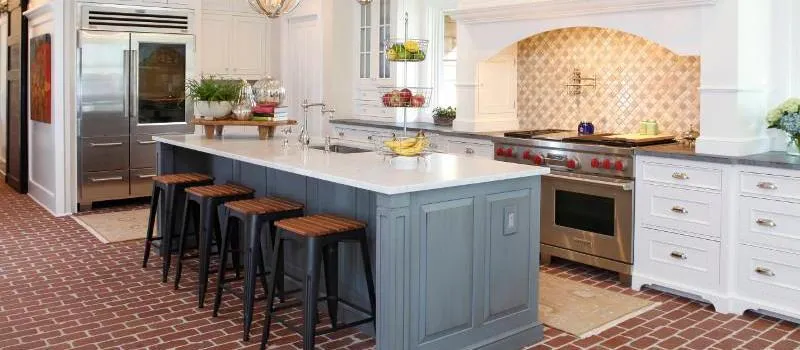
Pros:
- Bricks are easy to clean and maintain. They are fire-resistant and are known for or their extraordinary strength and extensive durability.
Cons:
- Bricks are highly porous and can chip off easily.
Concrete flooring:
Concrete is a man-made concoction of cement, rocks, granite chips, and other material. Concrete floors are completely customizable. Flooring done in concrete is strong and probably among the most durable types of flooring. Concrete flooring is largely damage-resistant, except for slight chipping and scratching due to wear and tear. However, moisture can adversely affect this floor with cracks and craters. Today, concrete floors are found in a wide range of colors and textures in Indian homes.
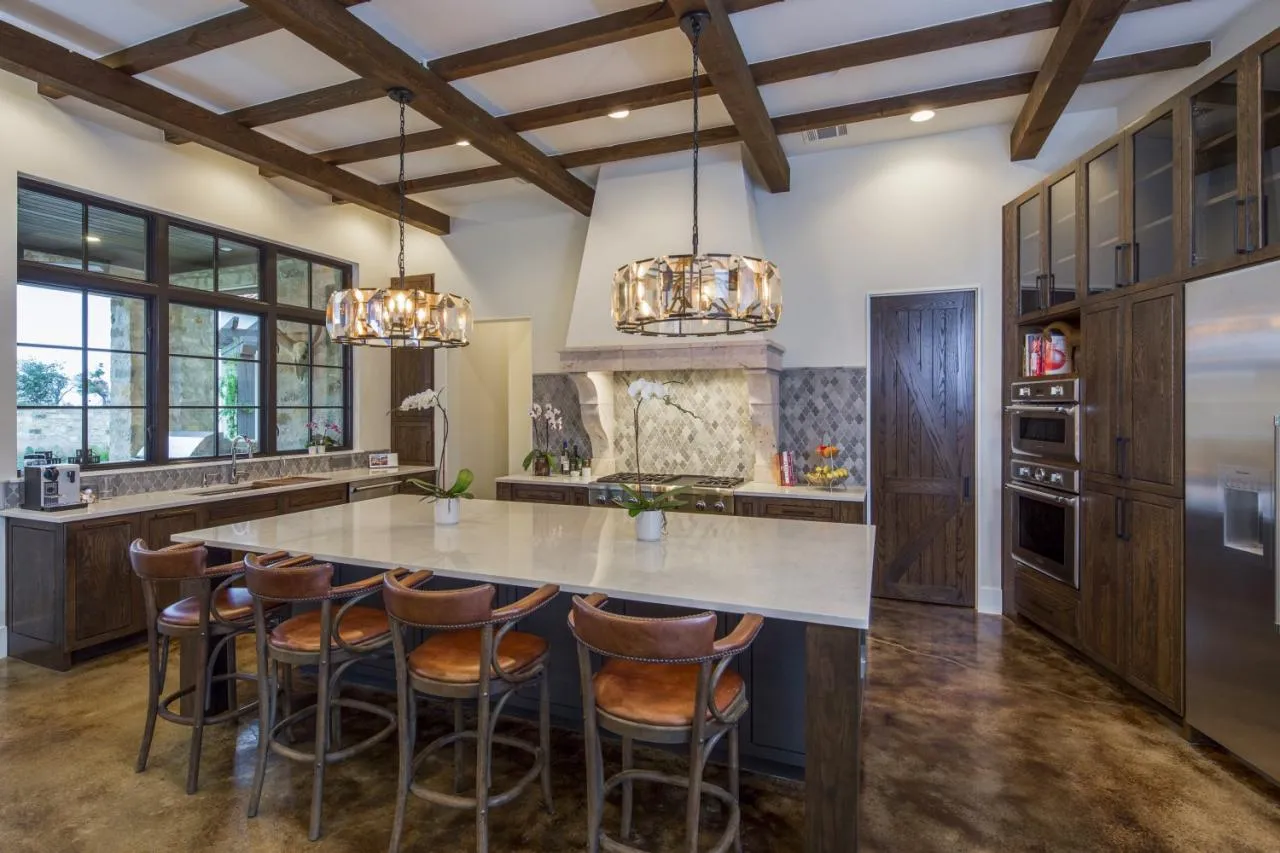
Pros:
- Can be designed for any budget
- Unlimited creative options
- Requires little maintenance
- Will last for decades (50+ years)
- Resists moisture and stains when properly sealed;
Cons:
- Requires occasional resealing
- Can be difficult to patch
- You may need area rugs for comfort and warmth
- Cracks can develop over time
- Can become slippery when wet
Epoxy Flooring:
It is the ultimate contemporary flooring system that’s filling a niche for homeowners who want something different. Epoxy floors are stylish, modern, and fun. They wear better than painted wood, offer vibrant color, and add personality to any space. Epoxy coatings really get interesting when it comes to three-dimensional options. One of these options is metallic epoxy flooring which has a pearlescent, 3D effect that can resemble flowing lava, water, or molten metal. For something really unique, 3D images can be applied and covered with a clear epoxy coating.
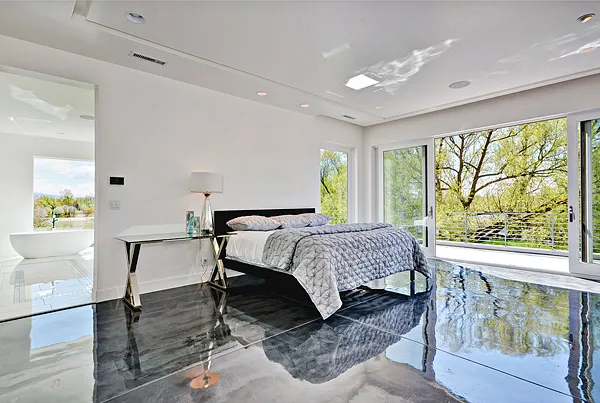
Pros:
- Appearance
- Affordability
- Easy to maintain
- Creates visual interest
- Economical.
Cons:
- Dropping Heavy Objects May Cause Epoxy to Chip
- Exposure to UV Rays Can Cause Epoxy to Yellow
- Skilled labor required for installation.


